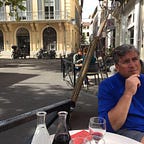Whiskey or Whisky, with or without the E?
Different countries use different spellings of the word whiskey or whisky. Traditionally, Scotland, Japan, and Canada spell whisky without the “e” while Ireland and the United States spell whiskey with the “e.”
The differentiation started around the turn of the 20th century. At that time (1860–1940), Irish whisky was spelled without the “e” and was the most popular, most produced, and considered the most premium whisky the world over. In 1860 Irish whisky accounted for 70% of worldwide production. In Dublin in the 1880’s, 40% of the work force was employed in distilling or brewing or supplying those industries.
For comparison, in 1900, Jameson’s Irish Whisky, the second largest producer in Ireland, produced 1.5 million gallons. Glenlivet, Scotland’s largest producer, was making just 200,000 gallons.
Scottish and English distilleries were keen on earning some of Ireland’s liquid gold and in 1860 parliament passed the Spirits Act which allowed for blending of spirits.
Scottish producers started making easier and cheaper grain spirit and blending it with more expensive and difficult to produce single malt spirit. This was marketed as Blended Scotch Whisky. Blending allowed them to make a product very similar in style to Irish whisky but at a fraction of the cost.
The Irish were not happy. They complained to parliament that blends, “cannot be whisky and should not be sold under that name.” In 1908 a royal commission sided with the Scots and the blending law remained in place.
To differentiate themselves from the Scottish upstarts and their blended product, Irish distillers started spelling whiskey with an “e.”
After the repeal of prohibition in the United States, Irish whiskey was still considered the premium product so American distillers adopted the Irish spelling.
Interestingly, Single Malt Scotch is now considered a premium product and Irish whiskey is often blended. In the 1890’s Ireland had 30 distilleries; by 1990 it had just 3.
Irish whiskey production as of is rebounding and December 2019 has 32 active distilleries. Scotland, by comparison, has 130 active distilleries.
